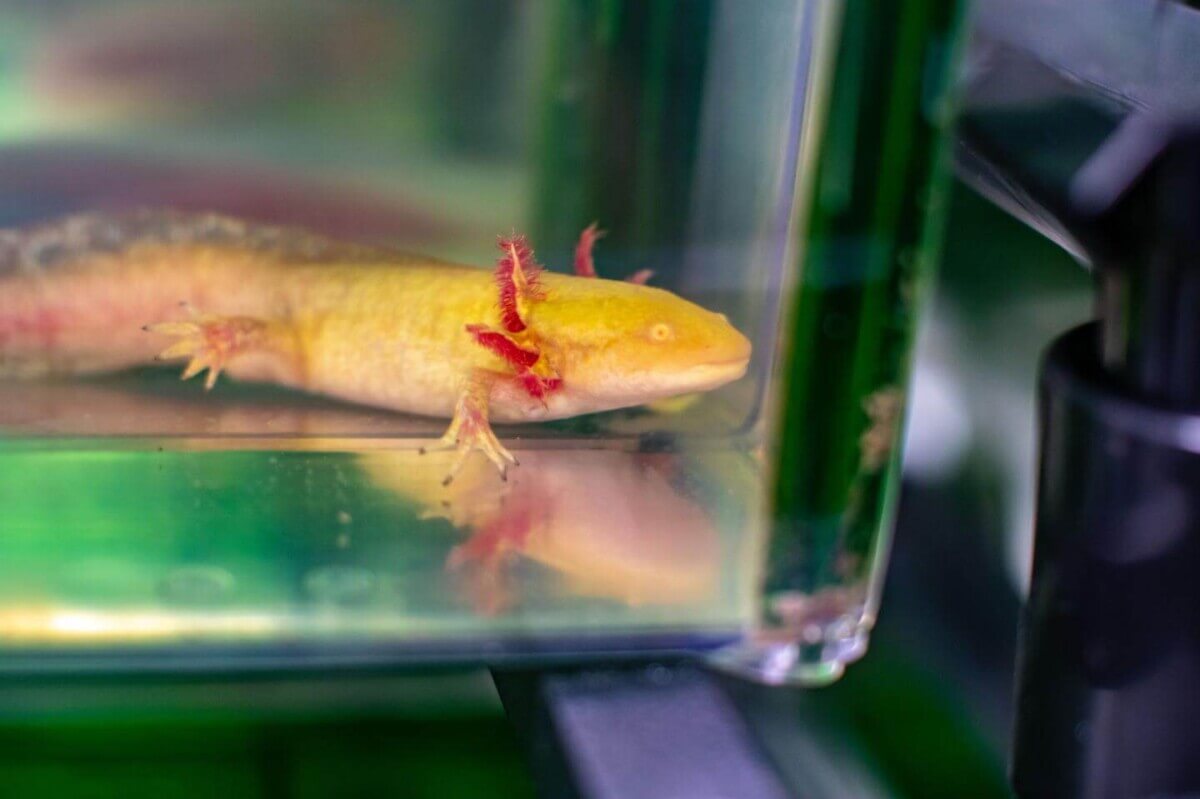
The axolotl is a salamander with remarkable capacity for regeneration. It can regrow its tail, limbs, spinal cord -- even their brains. (Credit: University of Kentucky)
LEXINGTON, Ky. — Bionic hands are no longer the stuff of sci-fi movies and comic books. And with 3D printer technology, people can now print a plastic hand. But what if we could teach our bodies to regenerate a new one? Biological researchers at the University of Kentucky are making this science-fiction fantasy more plausible. They have assembled the full genome of the axolotl, a unique salamander native to a lake near Mexico City.
“Axolotls have long been prized as models for regeneration,” says Randal Voss, a professor in the university's Spinal Cord and Brain Injury Research Center and a co-principal investigator on the project, in a media release. “It's hard to find a body part they can't regenerate: the limbs, the tail, the spinal cord, the eye, and in some species, the lens, even half of their brain has been shown to regenerate.”
How do these animals relate to humans? Despite their diminutive size and seeming simplicity, axolotls share many of the same genes as humans. Yet the axolotl has a full set of chromosomes — a genome — that is ten times the size of a human's.
The sheer size of the axolotl genome makes genetic analysis extremely difficult. Jeramiah Smith, an associate professor in the university's Department of Biology and a co-principle investigator, describes the genetic data as a “pile of puzzle pieces.” He says that getting the genome in the right order is the clue to going forward with analyzing genome structure and function and uncovering “the mechanisms that bestow upon axolotl their magical powers.”

The human genome project gave scientists tools to duplicate data for other organisms, but the computational complications for organisms with giant genomes made the process something of a nonstarter. That is until Smith and Voss got creative with genetic linkage mapping. They came up with a system to put the axolotl genome into the correct order quickly and efficiently.
This was the first genome of such a massive size to be assembled correctly.
Now that biological researchers have put this huge genome into its proper order, they can begin to study which genes turn on and off in the regeneration process. This could eventually lead to enormous implications for humans. “Just a few years ago, no one thought it possible to assemble a 30+GB genome,” explains Smith. “We have now shown it is possible using a cost effective and accessible method, which opens up the possibility of routinely sequencing other animals with large genomes.”
Voss and Smith demonstrated this new knowledge by quickly compiling data that identified a heart-defect gene in an axolotl. The scientists say this ability has the potential to provide new models for human disease. “Biomedical research is increasingly becoming a genetically-driven enterprise,” notes Voss. “To understand human disease, you have to be able to study gene functions in other organisms like the axolotl.”
The university is home to about 1,000 adult axolotls, a resource they share with other researchers and educators worldwide. With the complete genome sequence in place, this population of laboratory axolotls has become even more precious, especially considering the status of these wild salamanders on the critically endangered list.
“Now that we have access to genomic information,” boasts Voss, “we can really start to probe axolotl gene functions and learn how they are able to regenerate body parts. Hopefully someday we can translate this information to human therapy, with potential applications for spinal cord injury, stroke, joint repair...the sky's the limit, really.”
The future is looking bright, from the regenerated eyes of the axolotl.
Research data is published in the February 2019 issue of Genome Research.
This article was originally published on January 31, 2019.










